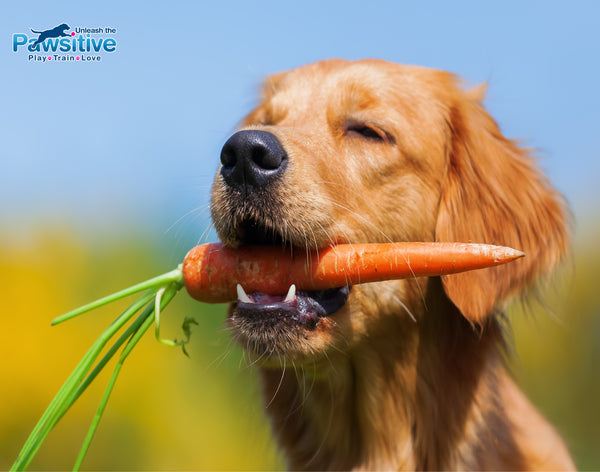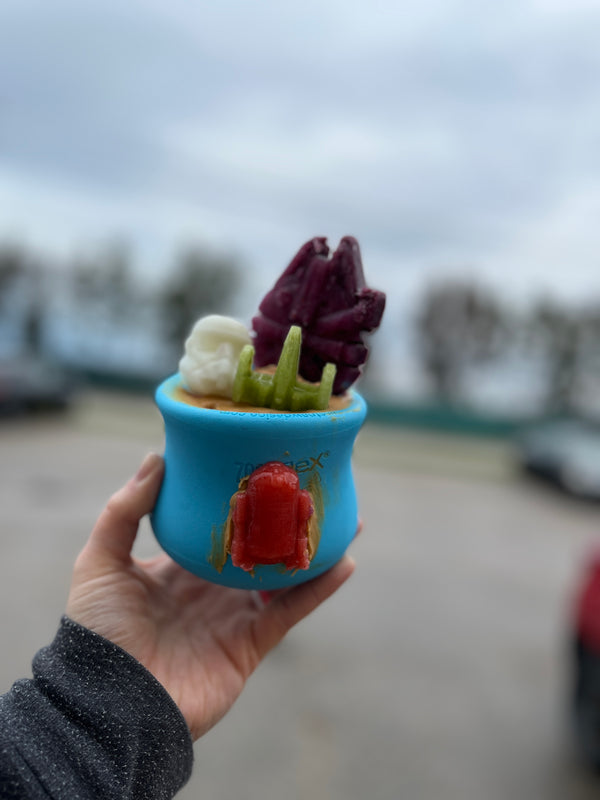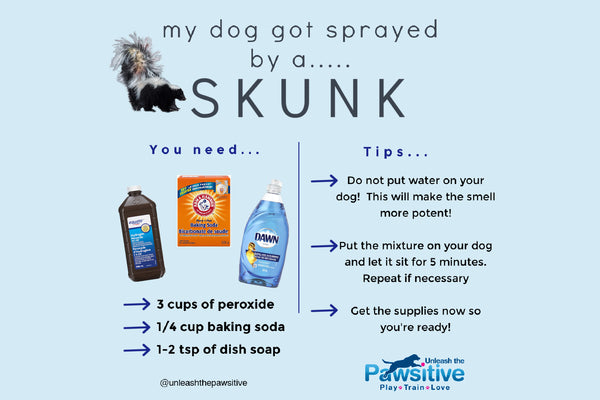
Canine Nutrition 101: Unlocking the Secrets to a Healthier, Happier Dog
Just like humans, dogs need a well-rounded and healthy diet to thrive and lead a fulfilling life. Proper nutrition is crucial for your dog’s overall health, energy levels, and longevity. In this blog, we’ll delve into the essentials of basic dog nutrition, providing insights into the key nutrients your dog needs for optimal health. We’ll also guide you through the process of selecting the best food for your dog, including how to read labels and understand ingredient lists. Additionally, we’ll explore the numerous benefits of incorporating fresh fruits and vegetables into your dog’s diet, and how these can complement your dog’s food. As always, before making any changes to your dog’s diet or introducing new foods, be sure to consult your veterinarian to ensure the best choices for your furry friend’s health. Now, let’s talk about nutrition!
Breaking Down the Basics
To better understand how to make good nutrition choices for your pet, it’s important to understand a little bit about canine nutrition. A complete and balanced canine diet is comprised of carbohydrates, fats, proteins, and vitamins and minerals. Let’s talk a little bit about the importance that each one of these building blocks plays in your dog’s diet.

Protein
Protein is what comprises tissue, cartilage, ligaments, and tendons and helps to grow hair, skin, nails, and muscle. Once protein is broken down, amino acids are created, which are essential for dogs’ daily functions. Dogs need 10 different amino acids to function properly - these amino acids cannot be found in the body and must be supplemented through your dog’s diet.
Carbohydrates
Carbs are a necessary source of energy and provide fuel for your dog in their day-to-day activities. Carbs come from plants and grains and provide your dog with sugar, starch, and fiber, which are all crucial elements in a dog’s diet. However some pet food manufactures have an excess amount of carbs in their diet which are then converted to sugar. This excess sugar leads to many health issues for your dog including obesity, diabetes, cancer and more. Puppies and dogs with high-energy needs should be fed a diet comprised of at least 20% carbohydrates. We recommend staying under 35% carbohydrates if you’re feedin your dog a commercial based kibble diet.
Fats
Fats play multiple roles in your dog’s well-being, like providing a source of energy and assisting with the absorption of fat-soluble vitamins. They also provide your pup with essential fatty acids, which help to keep inflammation at bay and help maintain skin and coat health. The two most important fats are omega-3 and omega-6 fatty acids which are commonly found in animal fats, fish and vegetable oils, and glycerin. For an extra omega boost, we love Adored Beasts Raw Hemp Oil or Livstrong Wild Fish Oil . Both are packed with healthy fats that support your pet’s daily functions including hip and joint support, brain function, and skin and coat health.
Vitamins & Minerals
Vitamins and minerals come in all sorts of shapes and sizes and can assist your dog with different bodily functions, like bone development, heart health, eyesight, and cognitive processing. A complete and balanced dog food will have all of the necessary vitamins your dog needs, and you can supplement with fresh fruits and veggies to give them an extra boost. One of our favourite supplements in GreenJuju - Just Greens which is a powerful superfood carefully curated mix of organic greens. These ingredients provide a high concentration of vitamins, minerals, and antioxidants,
Choosing The Right Food
With so many options on the market, it can be difficult to decide which food to pick for your dog. How do you know what’s best? Here are some guidelines we suggest using when deciding what food to choose.
Consider AAFCO Guidelines
AAFCO, or Association of American Feed Controls Officials, sets guidelines for commercial dog food that are followed by all credible food manufacturers. Foods that meet the AAFCO standards will have a nutritional advocacy statement printed on the label that says something like “[Name of food] is formulated to meet the nutritional levels established by the AAFCO Dog Food Nutrient Profiles for [life stage]” (this verbiage might change depending on the brand). AAFCO takes three different life stages into consideration: gestation/lactation, growth, and maintenance. Some foods are suitable for all life stages. We recommend choosing a reputable food brand that follows AAFCO guidelines and is balanced and complete.
Factor in Age
Depending on what stage of their life your dog is in, they may need more or less calories, fats, carbs, etc. Puppies and dogs who are growing need more protein, certain amino acids, fats, and vitamins and minerals than dogs in other life stages. Adult dog food is lower in proteins and fats than puppy food (ask your vet when you should make the switch from puppy to adult food!). Food for dogs in the gestation/lactation stage also need more protein, fats, and vitamins and minerals than dogs in the maintenance phase. Make sure to check the lifestage on the bag to make sure it’s appropriate for your dog.
Check the Ingredients
When choosing a food, make sure you pick a food with high-quality protein and carbs sources. Look for foods with meat as the first ingredient that are identified by species (ex: deboned chicken or salmon meal). Proteins should be higher up on the list followed by carbs and starches (pro tip, ingredients are listed in descending order of their content, from highest to lowest). AAFCO guidelines recommend a minimum 22.5% protein for dry puppy food and 18% protein for dry adult food. Since protein is typically the most expensive ingredient in food, cheaper manufacturers will typically cut costs by reducing the amount of protein used. Higher quality dog and puppy foods will typically contain a significant amount of more protein than the AAFCO minimum, with puppy food protein content being closer to 35% and adult food protein content being closer to 25%.
Avoid foods that have vague protein descriptions, like anything with “meat”, “fish”, or “poultry”. It’s hard to know what exact type of meat is in these ingredients and typically indicates lower-quality proteins. You should also avoid any meat by-products that aren’t specified. While by-products are occasionally organs that can be beneficial for your pup’s health, many by-products listed in dog food are unspecified animal body parts (like bones, feathers, intestines, etc) that don’t add any nutritional value and can be poorly processed.
It’s also a good idea to avoid foods that contain artificial flavours, colours, preservatives, BHT, BHA, and ethoxyquin. Studies have shown that these ingredients may cause cancer, liver and kidney damage, and immune system dysregulation. Some dogs may also suffer from itchy skin and gastrointestinal upset as a reaction to these ingredients. High-quality foods will use natural preservatives like Vitamin C (ascorbic acid) and Vitamin E (tocopherols) to keep food fresh.
We love Open Farm’s food options, like their RawMix Dog Food which features freeze-dried raw chunks, coconut oil, pumpkin, and glucosamine and chondroitin. These nourishing bits are packed with Omega-3 and Omega-6 fatty acids and probiotics and have no artificial preservatives, colours, or additives.
Talk to Your Vet
Regardless of guidelines and packaging, the most important thing to keep in mind is to always consult your vet when it comes to nutrition. Your vet will be able to give you personalized nutrition recommendations for your pet based on their medical history and other extensive knowledge.
Freshen It Up
A great way to add additional vitamins and minerals to your pet’s diet is to add fresh fruits and vegetables to their diet. Dr. Karen Becker suggests the below fruits and veggies to enhance your dog’s nutrition since they’re packed with vitamins and minerals beneficial for your pup!
- Apples (no seed or core)
- Avocados (no skin or seed)
- Bananas
- Blueberries
- Broccoli
- Brussels sprouts
- Cantaloupe (no rind)
- Carrots
- Celery
-
Cucumbers

- Green beans
- Mango (no pit)
- Mushrooms (no poisonous or wild mushrooms)
- Oranges (peeled)
- Peaches (no pit)
- Pears (no seeds or core)
- Peas
- Pineapple (no rind)
- Raspberries and strawberries
- Spinach
- Watermelon (no seeds or rind)
A great way to feed fresh fruits and veggies is to stuff them into an enrichment toy, like a KONG. KONG Cuisine has many recipes that incorporate fresh fruits and veggies into a recipe you can feed right out of your KONG. Additional fruits and veggies + enrichment time = a total win! Here are some of our favourite recipes from KONG Cuisine that your dog will love. Freeze any of them for an additional challenge!
To recap, nutrition plays a huge part in your dog's health, happiness, and well-being. Nutrition is the cornerstone on which your dog’s longevity is built; By making good nutrition choices for your dog, you can boost their health and maybe even add a few years to their life. A balanced diet not only supports their physical health but also enhances their energy levels and overall quality of life, ensuring they remain active and vibrant well into their senior years.
Until next time,

🐾 Woofs & Wags
- Melissa & Oaklee 🐾
@unleashthepawsitive
Sources:
https://www.webmd.com/pets/dogs/dog-nutrition
https://www.barkandwhiskers.com/2019-03-22-nl-what-fruits-and-vegetables-can-dogs-eat/
https://www.petmd.com/dog/nutrition/how-to-choose-the-best-dog-food
https://homewardpet.org/wp-content/uploads/2013/04/What-to-Look-For-in-Your-Dogs-Food.pdf
https://www.petmd.com/dog/nutrition/evr_dg_whats_in_a_balanced_dog_food#vitamins%20in%20dog%20food










